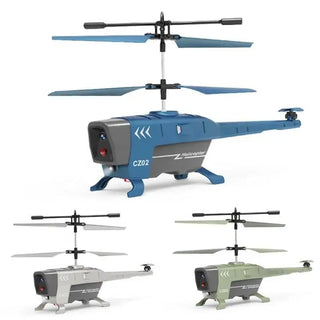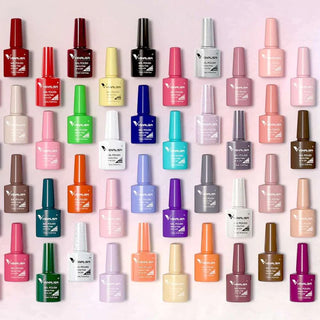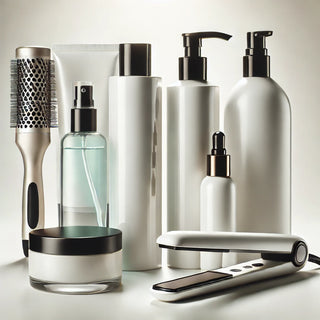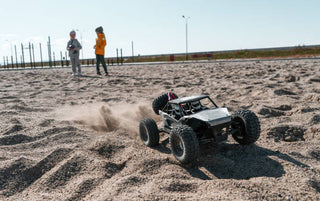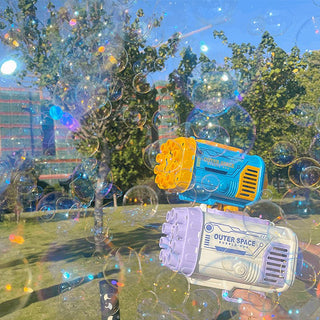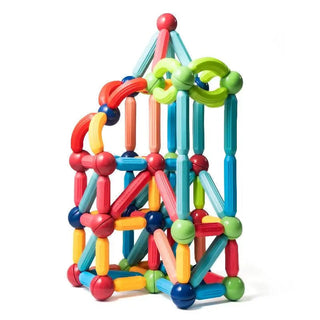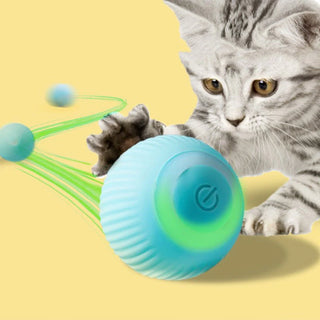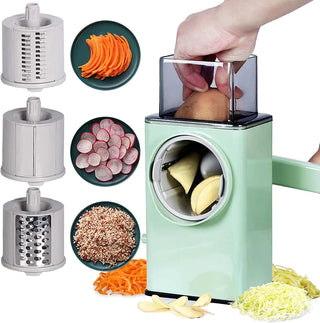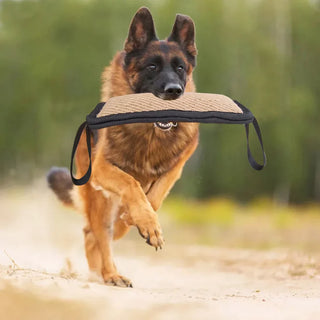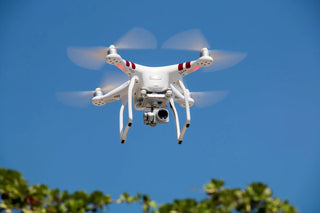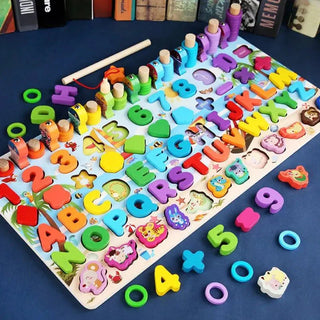So, you're thinking about getting into RC car racing, huh? It's a pretty cool hobby, full of fast cars and intense races. But if you're new to it, it can feel a bit much to figure out where to start. Don't worry, this guide is here to help you get going and maybe even become a pro at the rc raceway.
Key Takeaways
- Picking the right RC car for the track you'll be racing on is a big deal.
- Practice driving your RC car a lot to get good at turns and jumps.
- Keeping your RC car clean and checking it before and after races helps it last longer.
- Upgrading parts like tires and motors can make your RC car go faster.
- Joining local RC clubs and learning from other racers is a smart way to get better.
Choosing Your Ideal RC Raceway Vehicle
Selecting Your First RC Car
So, you're thinking about getting into RC racing? Awesome! The first step is picking the right car, and honestly, it can be a little overwhelming. The key is to not overthink it and get something that fits your budget and skill level. Don't go straight for the most expensive, high-performance model. Start simple. A good beginner car will be durable, easy to control, and relatively inexpensive to repair. Think of it as your learning tool. You'll crash, you'll break things, and that's okay! It's all part of the process.
Understanding RC Car Types
RC cars come in all shapes and sizes, each designed for different purposes. You've got buggies, touring cars, monster trucks, and more. For raceway use, buggies and touring cars are the most common. Buggies are great because they can handle a variety of track conditions, from smooth asphalt to dirt jumps. Touring cars are built for speed and excel on smooth, paved surfaces. Monster trucks? Probably not the best choice for a raceway, unless you're planning on some serious off-road shenanigans. Here's a quick rundown:
- Buggies: Versatile, good for on and off-road.
- Touring Cars: Fast, best on smooth surfaces.
- Monster Trucks: Durable, for rough terrain (not ideal for raceways).
Matching Car to Track Conditions
Okay, so you know the different types of cars. Now, how do you pick one that's right for the track you'll be racing on? This is where things get a little more specific. If the track is mostly smooth asphalt, a touring car is the way to go. Their low profile and grippy tires will give you maximum speed and control. If the track has a mix of surfaces, including dirt, jumps, or rough patches, a buggy is a better choice. They have more ground clearance and suspension travel, which allows them to handle uneven terrain. Also, consider the size of the track. A smaller track might be better suited for a smaller scale car, while a larger track will allow you to really open up the throttle with a larger, more powerful model.
Choosing the right car for the track is like choosing the right shoes for a sport. You wouldn't wear running shoes to play basketball, would you? The same principle applies to RC cars. Match your car to the track conditions for the best performance and the most fun.
Mastering RC Raceway Driving Techniques

Initial Driving Practice
Okay, so you've got your RC car. Now what? Don't just jump into a race! Start with the basics. Find an open space, maybe a parking lot or a large backyard, and just get a feel for the controls. Practice accelerating, braking, and steering. Get used to how the car responds to your inputs. It's like learning to ride a bike – you'll probably wobble a bit at first, but you'll get the hang of it. Try setting up some simple obstacles, like cones or even just water bottles, to practice maneuvering around them. The goal is to build muscle memory and get comfortable with the car's handling before you hit the track.
Advanced Cornering Strategies
Cornering is where races are won or lost. It's not just about turning the wheel; it's about finesse. One technique is to use the 'throttle-off' method. As you approach the corner, ease off the throttle slightly to transfer weight to the front wheels, giving you more grip. Then, gently steer through the corner, gradually increasing the throttle as you exit. Another strategy is 'drifting' (if your car and the track allow). This involves intentionally oversteering to slide through the corner, maintaining momentum. It looks cool, but it requires practice and a good understanding of your car's handling. Experiment with different approaches to see what works best for you and your car.
Optimizing Jumps and Landings
Jumps can be exciting, but they can also be disastrous if not approached correctly. The key is to control your speed and angle of approach. Too much speed, and you'll overshoot the landing; too little, and you'll nose-dive. Aim for a smooth, consistent approach, and use the throttle to adjust your angle in the air. If you're nose-diving, give it a little throttle to lift the front. If you're going to land on the rear, ease off the throttle. Landing smoothly is crucial for maintaining speed and avoiding damage.
Remember, practice makes perfect. Don't get discouraged if you crash a lot at first. Everyone does. The more time you spend practicing, the better you'll become at judging distances, controlling your speed, and mastering those tricky jumps and turns.
Essential RC Raceway Car Maintenance
Routine Cleaning Practices
Okay, so you've just finished tearing it up on the track. Now what? Time for cleaning! A clean RC car is a happy RC car, and a faster one too. Seriously, dirt and grime can mess with performance. Here's the deal:
- Compressed Air: Your best friend. Blast away loose dirt and dust after every run. Pay attention to the motor, gears, and suspension components.
- Soft Brush: For stubborn stuff, use a soft-bristled brush. An old toothbrush works great for getting into tight spots.
- Cleaning Solutions: Use cleaners made for RC cars. Regular household cleaners can damage plastic and rubber parts. I usually spray the cleaner on a cloth first, then wipe down the car.
- Bearing Maintenance: Bearings are dirt magnets. Clean and re-lubricate them regularly. A bearing blaster makes this job way easier.
I remember one time I skipped cleaning my car after a particularly muddy race. The next time I went out, the steering was all sluggish, and the motor was overheating. Lesson learned: cleaning is not optional!
Pre-Race Inspections
Before you even think about hitting the track, give your car a good once-over. This can save you from a DNF (Did Not Finish) and a whole lot of frustration. Here's what I check:
- Tire Condition: Check for wear and tear. Make sure the tires are properly glued to the rims. Nothing worse than a tire flying off mid-race!
- Suspension: Check for smooth movement and any signs of damage. Make sure the shocks are filled with oil and aren't leaking.
- Electronics: Make sure all the wires are connected securely. Check the battery voltage and make sure it's fully charged.
- Steering: Check for smooth and precise steering. Adjust the servo saver if needed.
- Fasteners: Make sure all screws and nuts are tight. Use thread lock on important fasteners to prevent them from coming loose.
Post-Race Care and Storage
So, the race is over, and you either won or learned a valuable lesson. Either way, your car needs some TLC before you pack it away. Here's my routine:
- Thorough Cleaning: Give the car a more thorough cleaning than you would after a practice run. Pay extra attention to areas that were exposed to a lot of dirt or moisture.
- Battery Storage: Store your batteries properly. LiPo batteries should be stored at a storage charge (usually around 3.8V per cell). Never leave fully charged LiPos unattended.
- Component Check: Check for any damage that may have occurred during the race. Replace any worn or broken parts.
- Proper Storage: Store your car in a clean, dry place. A carrying bag or case will protect it from dust and damage.
Here's a quick table to summarize maintenance frequency:
| Task | Frequency | Notes |
|---|---|---|
| Cleaning | After each run | Use compressed air and a soft brush. |
| Bearing Maintenance | Every 2-3 runs | Clean and re-lubricate. |
| Pre-Race Inspection | Before each race | Check tires, suspension, electronics, steering, and fasteners. |
| Post-Race Inspection | After each race | Check for damage and replace worn parts. |
| Battery Storage | After each use | Store LiPo batteries at a storage charge. |
Upgrading for Peak RC Raceway Performance
So, you're looking to seriously up your RC racing game? Good. Upgrading your car is the way to go. It's not just about spending money; it's about making smart choices that give you an edge on the track. Let's dive into some key areas.
Selecting Performance Parts
Okay, first things first: not all parts are created equal. You can't just slap on any shiny new thing and expect miracles. Think about what's holding you back. Is it acceleration? Handling? Durability? Identify the weak points before you start throwing money around. For example, if you're constantly stripping gears, maybe it's time for a metal gear set. If your shocks are leaking after every run, upgrade to something with better seals and adjustability. Here's a quick rundown of common upgrades:
- Gears: Metal gears for durability, different ratios for acceleration or top speed.
- Shocks: Oil-filled shocks with adjustable preload and rebound.
- Bearings: High-quality bearings for smoother rolling and less friction.
Tire and Rim Optimization
Tires are HUGE. Seriously, they're the only thing connecting your car to the track. Different tracks need different tires. Soft compound for high grip, hard compound for less grip and longer wear. Experiment! Rims also matter. Lighter rims reduce rotating mass, which improves acceleration and braking. Wider rims can increase stability, but they can also add weight. It's a balancing act. Here's a simple table to get you started:
| Track Condition | Tire Compound | Rim Width |
|---|---|---|
| High Grip | Soft | Standard |
| Low Grip | Medium | Wider |
| Loose Dirt | Hard | Narrow |
Motor and Suspension Enhancements
Alright, let's talk power and control. Upgrading your motor can give you a serious speed boost, but it also puts more stress on the rest of your car. Make sure your ESC (Electronic Speed Controller) can handle the extra juice. Brushless motors are generally more efficient and powerful than brushed motors, but they're also more expensive. Suspension is all about keeping your tires on the ground. Adjustable shocks, stiffer springs, and sway bars can all help improve handling. Don't be afraid to experiment with different setups to find what works best for your driving style and the track conditions.
Upgrading your RC car is a journey, not a destination. It takes time, experimentation, and a little bit of trial and error to find the perfect setup. Don't get discouraged if you don't see results right away. Keep tweaking, keep learning, and keep having fun!
Navigating the Competitive RC Raceway Scene
Joining Local RC Raceway Clubs
Okay, so you're thinking about getting serious. Joining a local RC club is a great move. It's not just about racing; it's about finding people who are just as into this hobby as you are. You'll find people of all skill levels, from total newbies to seasoned pros. Most clubs have regular race days, practice sessions, and even workshops where you can learn more about tuning your car. Plus, it's a great way to hear about new tracks, events, and gear.
Learning from Every Race
Every time you race, you have a chance to get better. Don't just focus on winning or losing. Pay attention to what happened during the race. Did your car handle well in the corners? Were your tires the right choice for the track surface? Did you make any mistakes that cost you time? Analyze your performance, and figure out what you can do differently next time. It's all about continuous improvement. I know it sounds cheesy, but it's true!
- Track your lap times to see where you're gaining or losing time.
- Watch other racers to see their techniques and strategies.
- Don't be afraid to ask for advice from more experienced racers.
Racing isn't just about speed; it's about strategy, consistency, and learning from your mistakes. It's a constant process of refinement, where you tweak your car, adjust your driving style, and analyze your performance to become a better racer.
Developing Race Day Strategies
Having a plan for race day can make a big difference. It's more than just showing up and driving. Think about things like:
- Tire Choice: What tires are best for the track conditions? Consider the surface, temperature, and weather.
- Battery Management: How long will your battery last at race pace? Plan your charging schedule accordingly.
- Starting Position: Where do you want to start the race? Consider the track layout and your strengths.
Also, be prepared to adapt your strategy if things don't go as planned. A crash, a mechanical issue, or a change in track conditions can all throw a wrench in your plans. The best racers are the ones who can think on their feet and make adjustments as needed.
Understanding RC Raceway Car Specifications
It's easy to get lost in the world of RC cars, especially when you start looking at the specs. What do all those numbers and terms really mean? Let's break it down so you can make sense of it all and pick the right car for the raceway.
Decoding RC Car Scales and Sizes
Scale refers to the size of the RC car compared to a real car. Think of it like this: a 1/10 scale car is one-tenth the size of the actual vehicle it represents. This number matters because it affects handling, parts availability, and where you can realistically run the car. A smaller scale car (like 1/16 or 1/24) is great for indoor tracks or tighter spaces, while larger scales (1/8 or 1/10) are better suited for outdoor raceways with more room to maneuver.
Here's a quick rundown of common scales:
- 1/10 Scale: A popular all-around size, good for both on-road and off-road racing.
- 1/8 Scale: Larger and more durable, often used for serious off-road competition.
- 1/16 & 1/18 Scale: Smaller, more affordable options, ideal for beginners or indoor use.
- 1/24 & Smaller: Typically toy-grade or micro RC cars, not usually used for serious racing.
Power System Fundamentals
Understanding the power system is key to getting the performance you want. There are two main types: electric and nitro (gas).
- Electric: These are powered by batteries and electric motors. They're cleaner, quieter, and easier to maintain than nitro cars. Electric systems are great for beginners. You'll see terms like "LiPo" (Lithium Polymer) which refers to the type of battery, and "kV" which indicates the motor's speed rating. Higher kV means more speed, but it can also mean less torque.
- Nitro: These use a small combustion engine that runs on a special fuel mixture. Nitro cars are louder, faster, and require more maintenance. They offer a more realistic engine sound and feel, but they're not for the faint of heart. You'll need to learn about tuning the engine and dealing with exhaust.
Choosing between electric and nitro really comes down to personal preference and how much time you want to spend on maintenance. Electric is generally more user-friendly, while nitro offers a more involved and, some would say, rewarding experience.
Chassis and Body Considerations
The chassis is the backbone of the car, and the body affects aerodynamics and appearance. The chassis material (plastic, aluminum, carbon fiber) impacts durability and handling. Aluminum is stronger and stiffer than plastic, but it's also heavier and more expensive. Carbon fiber is even lighter and stiffer than aluminum, but it's also more fragile.
The body isn't just for looks. It affects how the car handles by influencing airflow. A well-designed body can improve downforce and reduce drag, leading to better cornering and higher top speeds. Consider the body material too; polycarbonate (Lexan) is a popular choice because it's lightweight and impact-resistant.
Community and Resources for RC Raceway Enthusiasts
Engaging with Online RC Raceway Forums
Online forums are a great place to connect with other RC enthusiasts. These platforms are hubs for sharing tips, discussing builds, and getting advice from experienced racers. You can find answers to almost any question, from basic maintenance to advanced tuning. Plus, many forums have sections for buying, selling, and trading parts, which can be super helpful. It's also a good way to stay up-to-date on the latest trends and technologies in the RC world.
Finding Local RC Raceway Events
Finding local events is key to improving your skills and meeting fellow racers. Check out local hobby shops, RC clubs, and online groups to find races and gatherings near you. Attending these events is a great way to:
- Test your car's performance in a competitive environment.
- Learn from other racers' techniques and strategies.
- Make new friends who share your passion for RC racing.
- Discover new tracks and racing formats.
Participating in local events is more than just racing; it's about being part of a community. You'll find people of all skill levels, from beginners to seasoned pros, all willing to share their knowledge and help you improve.
Leveraging Expert Advice
Don't be afraid to seek advice from experienced racers and hobby shop staff. These people have a wealth of knowledge and can help you with everything from choosing the right car to troubleshooting problems. Here's how to make the most of their expertise:
- Ask specific questions about your car or racing technique.
- Attend workshops or seminars offered by local experts.
- Observe how experienced racers set up and drive their cars.
- Be open to constructive criticism and willing to learn from your mistakes.
Talking to people who know their stuff can save you time, money, and frustration in the long run. Plus, it's a great way to build relationships within the RC community.
Conclusion: Your Racing Odyssey Begins
So, there you have it. Getting into RC car racing is a pretty cool journey, full of fast cars and some good challenges. If you get the right car, like maybe one from ExBonzai, and you've got that racing bug, you're set for a wild ride. Just remember to learn as you go, hang out with other RC fans, and let your competitive side shine. Welcome to the awesome world of RC car racing!
Frequently Asked Questions
How do I choose my first RC car?
To pick your first RC car, think about where you'll drive it and how much you want to spend. Buggies are a great start because they work well on many surfaces. If you like rougher paths, a monster truck might be better. Always check reviews and maybe ask people at a local RC club for advice.
What's the best way to improve my RC car driving skills?
To get better at driving your RC car, practice a lot! Start with simple turns and getting a feel for the speed. Then, try to hit corners smoothly and learn how to land jumps without crashing. The more you drive, the more natural it will feel.
What kind of care does my RC car need?
Keeping your RC car clean is super important. After each run, wipe off dirt and dust. Before a race, check all the screws and moving parts to make sure nothing is loose. After a race, clean it well and put it away in a safe, dry spot to keep it in good shape.
How can I make my RC car perform better?
You can make your RC car faster and handle better by upgrading parts. Start with tires that match the track surface. Then, you can look at better motors for more power or improved suspension parts to help with bumps and turns. Just upgrade one thing at a time to see what works best.
Should I join an RC car club?
Joining an RC club is a fantastic idea! You'll meet other people who love RC cars, learn from their experience, and find out about local races. Many clubs also have tracks where you can practice and get tips from more experienced drivers.
What do the different RC car sizes mean?
RC car sizes are usually shown as a ratio, like 1/10 or 1/8. This means the car is 1/10th or 1/8th the size of a real car. Smaller numbers mean bigger RC cars. The size often affects how the car handles and what kind of track it's best for.

